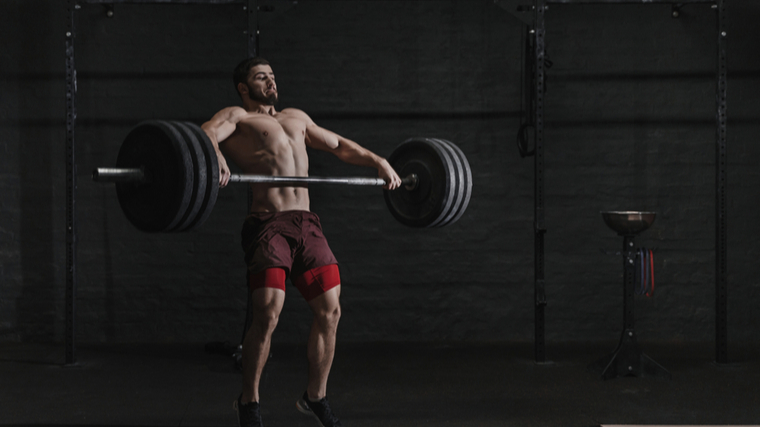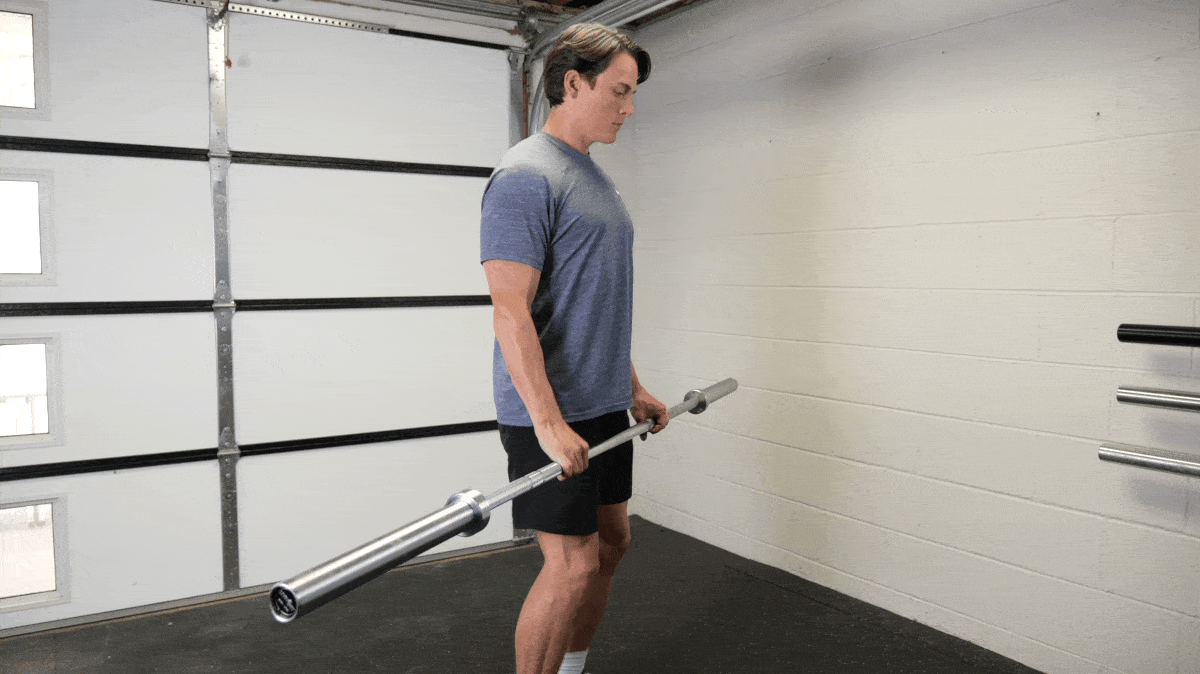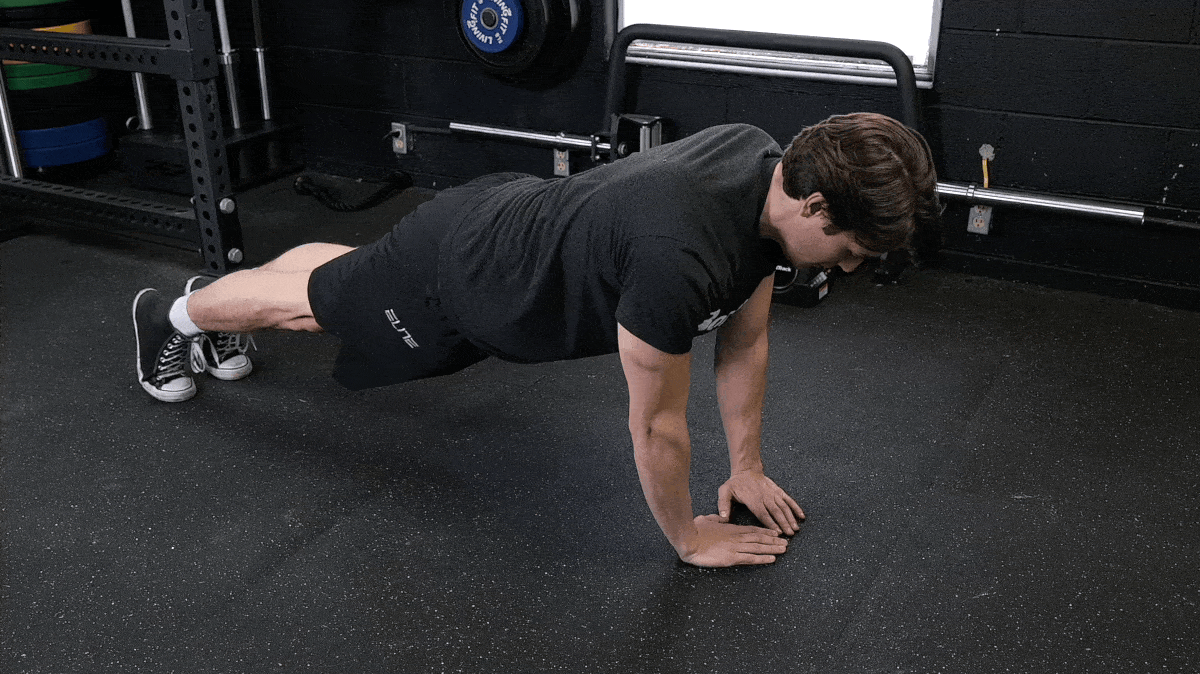The 8 Best Arm Exercises for Weightlifting | BarBend (original) (raw)
Big biceps don’t win strength competitions. Developing proficiency in the sport of weightlifting is about mastering both the snatch and the clean & jerk. If you’re pursuing the biggest total possible, how you train your legs deserves a lion’s share of your attention.
However, there’s no reason to neglect your arms along the way. In fact, the right exercises for your biceps and triceps can help you stay healthy in training and lift heavier on the platform. Knowing which exercises to incorporate — and which aren’t worth your time — will make the difference between a high-quality accessory routine and unnecessary fluff.

Credit: Arsenii Palivoda / Shutterstock
To that end, you can find a list of some of the most valuable arm isolation movements for Olympic lifting below, as well as an explanation of how to add direct arm work to a weightlifting training schedule.
Best Arm Exercises for Weightlifters
- Hammer Curl
- Reverse Curl
- Band Zottman Curl
- Band Overhead Extension
- Snatch Press
- Diamond Push-Up
- Rice Digs
- Wrist Rotation
Hammer Curl
While the clean is hardly considered an arm-dominant exercise — if you’re doing it properly, that is — the technique does require a lot of elbow flexion.
When you pull yourself downward to meet your barbell, your elbow flexes to get you there, but your hand doesn’t supinate, or turn upwards. Since the hammer curl doesn’t incorporate any movement or twisting at the wrist, it closely mimics the posture of your arm as you move to receive a heavy clean.

Benefits of the Hammer Curl
- Mimics the same elbow position you take during the catch phase of the clean.
- Dumbbells lower the absolute load used, making them less fatiguing on the body than barbell work.
How to Do the Dumbbell Curl
Stand upright with your feet close together in your clean stance and your palms facing each other. If you’d like to be ultra-specific, you may hook grip the dumbbells if their thickness allows. Bend your elbows to curl each dumbbell up as high as possible — do not stop the movement when your forearm is parallel to the ground. Keep your upper arm tightly tucked against your torso throughout. Lower the weight slowly, keeping your wrists neutral the whole time.
Reverse Curl
Most standard curls are performed with a supinated wrist — palms facing the ceiling. In weightlifting training, your arms are often under load when your wrists are pronated, or palms facing down. While the former provides more direct biceps stimulation as one of the biceps’ main functions is to twist the hand, the latter is more specific to your sport.

Benefits of the Reverse Curl
- Resembles the arm mechanics of the clean or power clean.
- Can be performed with a standard barbell.
How to Do the Reverse Curl
Grab a barbell with your standard overhand clean grip. Stand upright and curl the weight up as high as possible. Pause briefly at the top and lower slowly. If you experience discomfort in your wrists or elbows, unwrapping your thumbs may alleviate some tension.
Band Zottman Curl
Unless you’re a consummate professional, your technique in the snatch or clean may vary slightly from rep to rep. Since the lifts are performed dynamically, there’s plenty of room for small adjustments in form or joint posture that, if neglected in your accessory work, may become dangerous over time.
By adding rotation to a standard resistance band curl, you can prepare your wrists and elbows to endure unplanned movements or faulty technique.
Benefits of the Band Zottman Curl
- Trains your wrists and elbows to be strong against torsion and rotational torque.
- Low-impact, making them easy to include in most workouts.
- Almost every weightlifting gym provides resistance bands to work with.
How to Do the Band Zottman Curl
Place the band on the floor and stand on the middle of it. Grip each end in your hands and stand upright, palms facing forward. Curl the band up as high as possible. Pause momentarily, and then slowly lower. While lowering your hands, rotate them around such that your palms are facing behind you when you return to the bottom. Twist them back to the starting position, and go again.
Band Overhead Extension
Locking out a snatch or jerk is all about how strong your triceps, the muscle that controls elbow extension, are. Powerful triceps make for tight, snappy lockouts, and your accessory training should support that as much as possible.
Since resistance bands get more taut as they’re pulled, using one to perform an overhead extension not only trains your triceps in isolation but also reinforces a complete elbow lock with your arm over your head.
Benefits of the Band Overhead Extension
- May be performed one arm at a time, providing some valuable unilateral stimuli.
- Mimics the lockout of a snatch or jerk.
- Dynamic tension from the band teaches you to extend harder the closer you get to lockout.
How to Do the Band Overhead Extension
Wrap a band around a fixed point at a low height or stand on the stray end. Lift your upper arm overhead and then extend your elbow forcefully. Pause at the top position for a moment, envisioning a successful overhead lift. Slowly lower your hand back behind your head and repeat.
Snatch Press
If specificity is the name of the game, the snatch press has the winning hand. Although the snatch press is technically a compound lift, the wide grip demands that your triceps take on the bulk of the work. Not only can you do snatch presses as a means of building lockout strength, but they’re also a fantastic general overhead warm-up.
Benefits of the Snatch Press
- Perfectly replicates the lockout of the snatch.
- Can be trained unloaded as a warm-up, or loaded for strength gains.
- May be performed standing or in a squat position for more of a full-body challenge.
How to Do the Snatch Press
Unrack a barbell as you would for a standard back squat. Assume your typical snatch grip and pulling stance. With your gaze fixed straight ahead, drive the bar off your back with your triceps and forcefully lock it out overhead. Hold for a beat at the top and isometrically squeeze your arms and upper back. Lower the weight and absorb it by bending your knees slightly.
Diamond Push-Up
The push-up is a great general-purpose exercise but leaves something to be desired for Olympic lifters. Where it lacks in triceps stimulation and static stability in the wrists, the diamond push-up excels.
By placing your hands close together on the floor, your triceps must work far harder to lock out your elbow, which should translate well to your overhead game. Further, the diamond push-up presents a more challenging wrist position, which offers some valuable isometric tension to the joint.

Benefits of the Diamond Push-Up
- Requires no equipment whatsoever, making it convenient to perform anywhere.
- Can be safely pushed to failure without the hazards of working with heavy loads.
How to Do the Diamond Push-Up
Assume a plank position, but place your hands directly under your torso such that the tips of your index fingers and thumbs are touching. From here, lower slowly, allowing your elbows to flare out as needed, until your chest is as close to the ground as possible. Press up with your triceps to return to the starting position.
Rice Digs
For such a small joint, your wrists bear unbelievable loads in the snatch and clean & jerk. That said, the intricate musculature of the forearm, wrist, and hand are often hampered by static positions — or even bound in wrist wraps. To ensure you’re healthy from fingertip to elbow, you’ve got to get a bit creative with how you train.
Rice digs provide comprehensive, consistent resistance for all of the fine motor functions your wrist and hands can perform, a luxury that is simply unavailable with barbells or dumbbells.
Benefits of Rice Digs
- Allows you to train all of the anatomical functions of the wrist and hand without needing high-tech equipment.
- Rice digs don’t generate a lot of overall fatigue, making them suitable for daily practice.
How to Do Rice Digs
Fill a medium to large container with a bag of rice. Plunge your hands into the rice and curl, twist, sift through, or rotate your hands depending on what you want to train. If you’re working on your grip, crush the rice in your palms for time. If you want to improve wrist and finger health, rotate your closed fist in a “figure eight” motion for time.
Wrist Rotation
Many movements in weightlifting take place in one plane. When it comes to your wrists, they usually flex or extend. However, the overhead position of the snatch requires rotation and radial deviation. These fine motor patterns aren’t typically stimulated by curls or even most direct forearm work. Wrist rotations allow you to work on a function of the wrist that may be under-stimulated.
Benefits of the Wrist Rotation
- Trains a function of the wrists and elbows that may not be effectively stimulated by other exercises.
- Can be effectively performed with very light weights.
How to Do the Wrist Rotation
Stand upright with your arms tucked to your sides and your elbows bent at 90 degrees in front of you while holding a pair of light dumbbells. Starting with your palms facing upwards, as if you were mid-way through a dumbbell curl, rotate your wrist around until your palms are facing the floor. Hold temporarily, and slowly rotate back to the starting position.
Anatomy and Function of the Arms
Your legs steal the show on the weightlifting platform, but the bar doesn’t get where it needs to go without strong arms to hold it there in the first place. Each muscle group in your arm plays a vital, if sometimes subdued, role in your weightlifting performance.
Triceps
The triceps brachii primarily extend your elbow but also assist in shoulder extension. When it comes to weightlifting, your triceps run the show once you’ve got your barbell overhead in either the snatch or jerk.
Biceps
While the biceps brachii are front and center in bodybuilding competitions, they’re unfortunately a second-fiddle muscle in Olympic lifting. However, your biceps do get to shine in the third pull of the clean, as you flex your elbow to pull yourself to the bar.
Forearms, Wrists, and Hands
Although they don’t do much of the proverbial — or literal — heavy lifting, the various muscles that run from your elbows to your fingertips bear enormous tension throughout both lifts.
[Read More: The Best Quad Exercises and Quad Workouts for Muscle Gain]
Your forearms contract isometrically to help secure your hook grip, your wrists flex in the clean and snatch pull phases, and even the tiny tissues in your hand are strained by the grip width of most snatches.
How to Mix Weightlifting and Arm Training
A good weightlifting routine isn’t made of curls and pressdowns. If you’re building your snatch or clean & jerk, you’ve got a lot on your plate already when it comes to your workouts. Your accessory training needs to be tightly calibrated such that it doesn’t interfere with your main goal — a big total.
Therefore, it’s important to avoid “volume creep.” It’s common for weightlifting workouts to run well over an hour or two, and the last thing you’ll want to do after you finish your eighth set of squats is grind through a full arm workout.
[Read More: Our Favorite Forearm Workouts, + the Best Forearm Exercises]
To build up your guns while still making progress on your sport, arm work can be included in one of two ways — either as part of your warm-up, with exercises that complement your session, or towards the end of your workout, where you’ll ante up the volume a little.
Below are two sample workouts that highlight how direct arm training can fit into a full weightlifting training plan:
Sample Workout A
- Band Zottman Curl: 2 x 15
- Snatch Press: 3 x 8
- Snatch Balance: 5 x 3
- Clean Pull: 3 x 4
- Front Squat: 6 x 3
This workout puts the isolation work in front. The Zottman curls should warm-up your elbows nicely for front squatting later on, without fatiguing you too much. Snatch presses can double as both direct triceps work and a technique primer for the snatch balance.
Sample Workout B
- Snatch: 5 x 2
- Power Clean & Jerk: 3 x 3
- Snatch Pull: 3 x 3
- Back Squat: 4 x 4
- Back Extension: 2 x 15
- Reverse Curl superset with Diamond Push-Up: 3 x 10 each
- Rice Digs: 3 x 30 seconds
You can add more arm volume after your sport-specific training is finished, provided you have the energy. Reverse curls pair nicely with diamond push-ups since they can both be performed on the platform, and you can finish up with some rice digs for hand or wrist prehab.
The Big Picture
Powerful legs and a sculpted back are the hallmarks of any dedicated weightlifter. That doesn’t mean you should neglect your arms altogether, though. There’s nothing wrong with including a bit of vanity work into your routine to keep things fresh and fun.
Plus, a bit of direct arm training can do more than help you look good at the beach. Every barbell you thrust overhead is supported by your arms. Show them some love, and they’ll reward you accordingly on the platform.
Featured Image: Arsenii Palivoda / Shutterstock